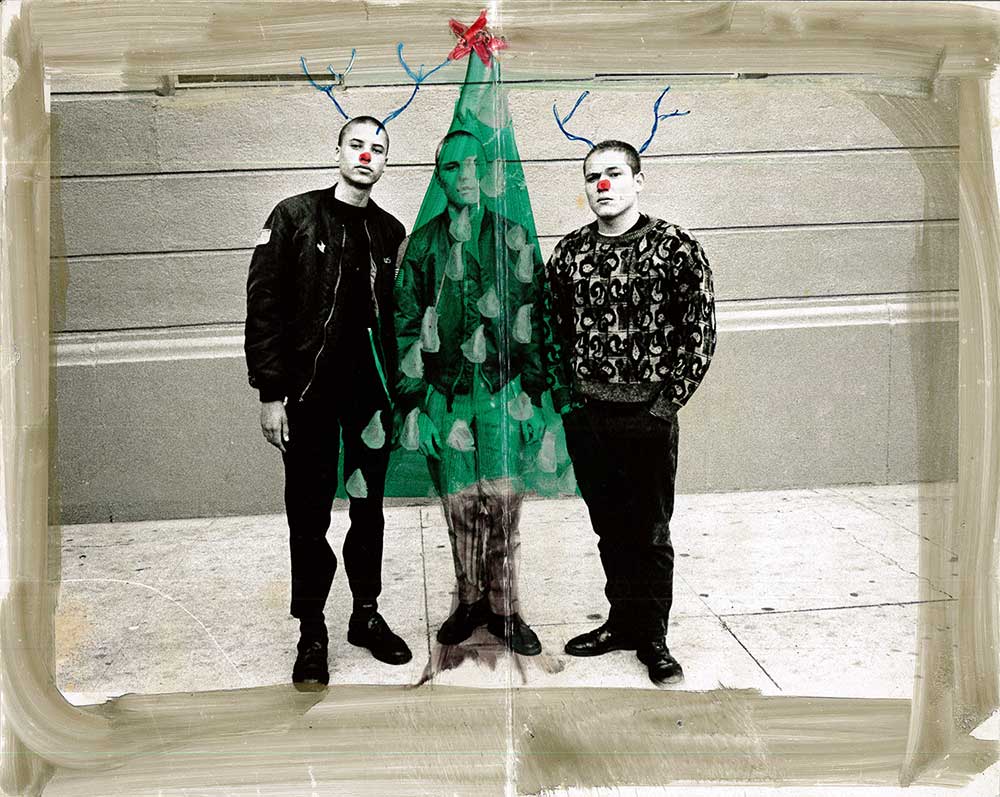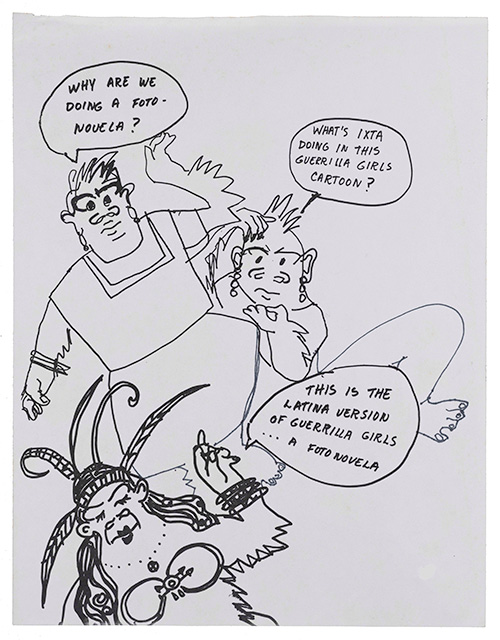Get Involved
Internship, fellowship, and volunteer opportunities provide students and lifelong learners with the ability to contribute to the study and preservation of visual arts records in America.
Acquisitions: Kathy Vargas Papers

This entry is part of an ongoing series highlighting new acquisitions. The Archives of American Art collects primary source materials—original letters, writings, preliminary sketches, scrapbooks, photographs, financial records and the like—that have significant research value for the study of art in the United States. The following essay was originally published in the spring 2017 issue (vol. 56, no. 1) of the Archives of American Art Journal. More information about the journal can be found at http://www.journals.uchicago.edu/toc/aaa/current.

Known for her collages and photographs, Kathy Vargas (b. 1950) is an artist and college professor living in San Antonio, Texas. Catalogues, exhibition announcements, and professional correspondence in her papers demonstrate the significance of her practice for the histories of American photography, Chicano/a art, and feminist art. More intimate, personal letters with artists Judith F. Baca, Benito Huerta, Daniel Joseph Martinez, Mark Power, Jeff Perrone, Christopher Rauschenberg, and others underscore her reach in the contemporary art world.
Hallmarks of Vargas’s work include mechanically or digitally manipulated photographic scenes often based on memories and embellished with hand-applied color and handwritten text. A 1996 holiday card from Jim Goldberg, another artist known for incorporating text and applied color into photography, playfully demonstrates this shared working method. In his note to Vargas on the back of the card, Goldberg apologizes for not yet returning a loaned book, sheepishly admitting, “So this Rushdie guy has been sitting by my bed untouched for way too long.” A voracious reader who frequents local bookstores during her travels, Vargas lent Goldberg a new purchase (Salman Rushdie’s 1995 novel The Moor’s Last Sigh) when the two artists were in Washington, DC, for a planning meeting for the 1996 Corcoran Gallery of Art exhibition Hospice: A Photographic Inquiry. We can imagine how the celebrated author’s work may have influenced both Goldberg and Vargas.

The Vargas Papers also contain correspondence with foundational Chicano/a art scholars Shifra Goldman and Tomás Ybarra-Frausto, curators Philip Brookman, Virginia Mecklenburg, and Tere Romo, and critics A.D. Coleman and Lucy Lippard. There are decades of letters exchanged between Vargas and Lippard, whose papers are also housed at the Archives. A photo album in the papers captioned “A Weekend Visit by Moira [Roth] & Kathy to Lucy, Galisteo, Chimayo & Santa Fe, New Mexico, October 24–27, 1997” further documents Vargas and Lippard’s relationship. The album contains fifty-four three-by-five-inch snapshots that record the three long-respected art workers on retreat near Lippard’s home in Galisteo, happily recharging around communal meals and on day trips.
While Vargas’s work is collected nationally and internationally, the impact of her dedicated arts activism, mentorship, and curatorial and administrative work is perhaps most strongly felt in her home state of Texas. Administrative files and teaching records document positions at the Blue Star Contemporary Art Museum and the Guadalupe Cultural Arts Center, and her ongoing post in the Department of Art at the University of the Incarnate Word. One of the most novel objects in her papers, and one that sheds new light on the development of feminist art history in Texas, is a twenty-seven-page hand-drawn fotonovela introducing the San Antonio chapter of the infamous Guerilla Girls. While this well-known feminist group of artist-activists is often associated with New York City, the Vargas Papers call attention to the group’s resonance in San Antonio. The fotonovela contains references to Lippard, suggesting her role as conduit between members in each city.
Josh T. Franco is the Latino collections specialist for the Archives of American Art.
Internship, fellowship, and volunteer opportunities provide students and lifelong learners with the ability to contribute to the study and preservation of visual arts records in America.

You can help make digitized historical documents more findable and useful by transcribing their text.
Visit the Archives of American Art project page in the Smithsonian Transcription Center now.
A virtual repository of a substantial cross-section of the Archives' most significant collections.
Add new comment